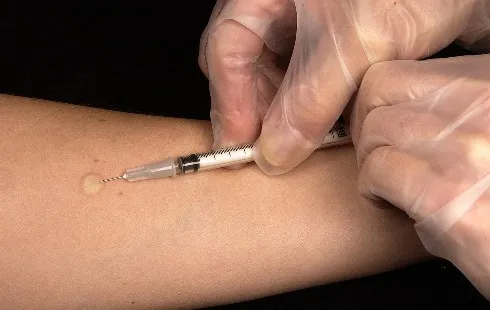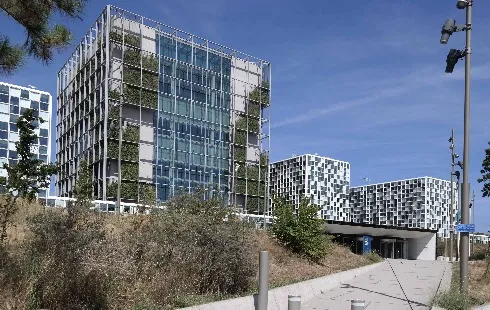
Trump's Tariff War: China Urges Immediate Repeal of Tariffs Amid Countermeasures
Section: News
New research shows how some bacteria manage to evade a widely used antibiotic by removing it from their protein factories.
The widespread use of antibiotics over the past decades has led to the emergence of resistant bacteria. Since their discovery in the 1930s, antibiotics have been overused in human medicine and in industrial farms as food supplements to promote animal growth. A shocking 80% of antibiotics produced in the USA are used in farms, despite warnings from the World Health Organization of the danger this poses to public health. Antibiotic resistant bacteria can spread from animals to humans through meat, water and soil contamination. A few countries, like European Union member countries and South Korea, have recently restricted the use of antibiotics for clinical purposes, but the number of resistant bacteria strains continues to rise at an alarming rate worldwide, and new antibiotics are needed to gain ground against bacteria.
Understanding the molecular details of antibiotic resistance is crucial for the design of effective drugs. Now, two independent studies describe how bacteria evade tetracyclines, a family of antibiotics that act against a broad range of bacteria that cause diseases such as pneumonia, syphilis, cholera and even some strains of the deadly superbug MRSA.
An attack to the bacterial protein factories
Like many other antibiotics, tetracycline drugs work by targeting the bacteria's protein factories- the ribosomes- and blocking protein production. This doesn't kill the bacteria, but it stops them from multiplying, which buys the immune system critical time to fight the infection.
Bacteria have many strategies to escape tetracycline drugs, but the most common is the use of specialised proteins that remove the drug from its target, a process called ribosome protection. To understand how this works, Dr. Joachim Frank and colleagues at Columbia University, USA, determined the 3D structure of one such protein - Tet(O) - bound to ribosomes using cryo-electron microcopy, a technique where samples are frozen quickly and then analysed with a high-power microscope.
Previous work by the team suggested that Tet(O) acts indirectly by attaching to ribosomes and forcing them to change shape so that tetracycline molecules can't stick to them. In a new study published in Nature Communications, Dr. Frank's team shows not only how Tet(O) pulls this off, but also that, unexpectedly, Tet(O) pushes tetracycline molecules away from ribosomes. This gives bacteria double protection against antibiotics.
A step towards new antibiotics
With their detailed 3D structure, the researchers could predict the attachment sites between Tet(O) and the ribosome, which in theory should be essential for ribosomal protection. To test this, they put Tet(O) proteins with missing bits into bacteria, and checked whether they lost the resistance to tetracycline.
Why is this important? These Tet(O)-ribosome binding regions are very likely to change and adapt to the new generation of tetracycline antibiotics that are currently our last line of defense against some strains of MRSA. With these molecular details scientists can make a good guess where new resistances might appear, and then "an antibiotic might be designed to have affinity to multiple sites near or around the Tet(O)-ribosome binding site" says Dr. Frank.
Dr. Daniel Wilson's team at the University of Munich reports similar findings in a study published recently in PNAS, looking at the interaction of ribosomes with Tet(O)'s sister protein Tet(M). Dr. Wilson explains "Our main finding is that the Tet(M) protein directly enters into the tetracycline binding site to dislodge the drug from the ribosome".
Antibiotic resistance: how grim is the future?
Unfortunately, in the race between bacteria and men, bacteria have the upper hand. The genes carrying antibiotic resistance, such as the tet genes encoding for Tet(O) and Tet(M) proteins, can quickly spread between bacteria in mobile DNA elements. To make matters worse, these genes can mutate and create new resistances much faster than effective antibiotics can be made and tested in clinical trials. "New antibiotics are urgently needed to fight the growing and threatening development of multi-resistant bacteria strains" says Dr. Knud Nierhaus, an expert on ribosome structure and antibiotic resistance from the Max Plank Institute for Molecular Genetics in Berlin.
What is the best strategy to tackle antibiotic resistance in the future? It is estimated that China uses in its industrial farms about four times the total amount of antibiotics used in the USA, and a new study identified around 150 new antibiotic resistant genes in manure samples from only three Chinese farms. "The most dangerous development, with unpredictable results on the human race, is the indiscriminate use of existing antibiotics, including antibiotics in livestock entering the food chain" says Dr. Frank "Regulation of agriculture should be a major part of the strategy, along with targeted drug development."
Original Article: Mechanism of Tetracycline Resistance by Ribosomal Protection Protein Tet(O), doi: 10.1038/ncomms2470.

Section: News

Section: News

Section: Health

Section: News

Section: News

Section: Travel

Section: News

Section: News

Section: Politics

Section: Arts

Health Insurance in Germany is compulsory and sometimes complicated, not to mention expensive. As an expat, you are required to navigate this landscape within weeks of arriving, so check our FAQ on PKV. For our guide on resources and access to agents who can give you a competitive quote, try our PKV Cost comparison tool.

Germany is famous for its medical expertise and extensive number of hospitals and clinics. See this comprehensive directory of hospitals and clinics across the country, complete with links to their websites, addresses, contact info, and specializations/services.

Join us for a captivating organ concert featuring Giacomo Gabusi from Bologna. Experience an evening of classical music with works by Wagner, Bossi, and Messiaen, among others. This event is part of the Pasinger Orgeltage series, promising a delightful musical experience. Admission is free, but...
No comments yet. Be the first to comment!